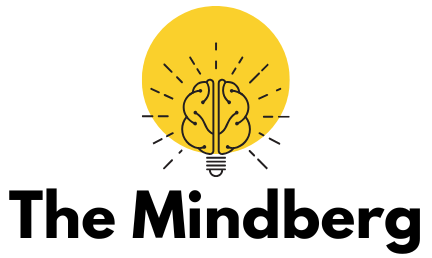Idiopathic Hypersomnia (IH) is a rare and complex sleep disorder characterized by excessive daytime sleepiness despite having a full night’s sleep. Individuals with IH may experience difficulty staying awake during the day, even after what seems like a sufficient amount of rest.
This chronic sleepiness can interfere with daily functioning, social interactions, and overall quality of life. Unlike narcolepsy or other sleep disorders, the cause of IH remains unknown, leading to the term “idiopathic,” meaning of unknown origin.
Understanding the potential causes of IH and exploring treatment options is crucial for managing this condition effectively. While the exact mechanisms behind IH are still unclear, research suggests that both neurological and genetic factors may play a role.
Furthermore, treatment strategies typically involve a combination of medications and lifestyle adjustments aimed at improving alertness and minimizing sleep disruptions. This blog will examine the symptoms, potential causes, diagnostic methods, and available treatment options for individuals with idiopathic hypersomnia.
What Is Idiopathic Hypersomnia?
Idiopathic Hypersomnia is a disorder where individuals experience extreme sleepiness during the day despite getting adequate or even prolonged sleep at night. Unlike other sleep disorders, people with IH do not typically experience sleep disruptions like insomnia or sleep apnea, yet they feel the need to sleep for extended periods. Symptoms may include prolonged naps that do not relieve sleepiness, difficulty waking up in the morning, and feeling “foggy” or confused upon waking.
Though IH often goes undiagnosed for years, it can significantly affect personal and professional lives. The inability to stay awake and alert during the day can impair cognitive performance, making tasks such as driving or concentrating difficult. These disruptions can lead to a variety of emotional and mental health challenges, such as depression and anxiety.
Causes of Idiopathic Hypersomnia
The exact cause of Idiopathic Hypersomnia is unknown, which is why it is categorized as “idiopathic.” However, several theories have been proposed to explain its onset. One possibility is a dysfunction in the brain’s ability to regulate sleep-wake cycles, specifically the areas of the brain responsible for controlling wakefulness and alertness.
Neurological studies suggest that imbalances in certain neurotransmitters, such as gamma-aminobutyric acid (GABA) and hypocretin, could be implicated in IH. Hypocretin is a neurotransmitter that helps regulate wakefulness, and a deficiency in this substance has been linked to sleep disorders like narcolepsy.
However, in IH, hypocretin levels do not show the same marked reduction as in narcolepsy, suggesting other factors are involved. Genetic factors may also play a role, as individuals with a family history of sleep disorders may be at a higher risk of developing IH.
Diagnosing Idiopathic Hypersomnia
Diagnosing Idiopathic Hypersomnia can be challenging due to the overlap of symptoms with other sleep disorders. A thorough evaluation by a sleep specialist is essential for accurate diagnosis. The process typically begins with a detailed medical history, including sleep patterns and any other symptoms.
The Epworth Sleepiness Scale (ESS), a subjective questionnaire, is often used to assess the severity of daytime sleepiness. In addition, a sleep study, or polysomnography, may be conducted to rule out other conditions such as sleep apnea or narcolepsy.
Another diagnostic tool, the Multiple Sleep Latency Test (MSLT), measures how quickly an individual falls asleep during scheduled nap times throughout the day. These tests help determine whether excessive sleepiness is due to IH or another underlying condition.
Treatment Options for Idiopathic Hypersomnia
While there is no cure for Idiopathic Hypersomnia, various treatment options are available to manage symptoms. The primary goal of treatment is to reduce excessive daytime sleepiness and improve overall quality of life. Medications such as stimulants and wake-promoting agents are often prescribed to help increase alertness and improve cognitive function.
Stimulants like modafinil and armodafinil are commonly used to treat IH as they promote wakefulness without causing the same level of side effects as traditional stimulants. Other medications, such as methylphenidate or amphetamines, may also be used, but they can carry a higher risk of dependence or side effects. In some cases, antidepressants or medications targeting neurotransmitter imbalances are recommended, depending on the patient’s specific symptoms and underlying health conditions.
Lifestyle Adjustments for Managing IH
Alongside medication, lifestyle adjustments can play a vital role in managing Idiopathic Hypersomnia. Establishing a consistent sleep routine, where individuals go to bed and wake up at the same time every day, is crucial for regulating sleep patterns.
Additionally, short naps during the day can help manage excessive sleepiness, though they should be kept brief to avoid interfering with nighttime sleep. Engaging in regular physical activity, particularly in the morning, can also improve energy levels and help combat fatigue. A healthy diet rich in vitamins and minerals, especially those that support brain health, may also contribute to better overall well-being.
Coping with the Emotional and Social Impact
The emotional and social consequences of Idiopathic Hypersomnia can be significant. Chronic daytime sleepiness often leads to feelings of frustration, isolation, and diminished self-esteem. Individuals with IH may find it challenging to maintain relationships, pursue career goals, or enjoy social activities due to their constant need for rest.
Psychological support is critical for individuals struggling with the emotional burden of the condition. Cognitive behavioral therapy (CBT) and counseling can help individuals manage the psychological impact of IH. Support groups, either in-person or online, can also provide a sense of community, offering encouragement and practical advice from others who understand the struggles of living with a sleep disorder.
The Role of Support Networks
Family members, friends, and coworkers play an important role in supporting those with Idiopathic Hypersomnia. A supportive environment helps individuals with IH navigate the challenges they face daily. Educating family members and colleagues about the condition can foster empathy and understanding, ensuring that individuals receive the accommodations they need to succeed in their personal and professional lives.
Workplace modifications, such as flexible hours or the opportunity for periodic naps, can be helpful for individuals with IH. Schools and universities can also assist by offering adjustments, such as extended test times or additional breaks. A collaborative effort between the individual, their healthcare provider, and their support network is key to improving the quality of life for those with IH.

